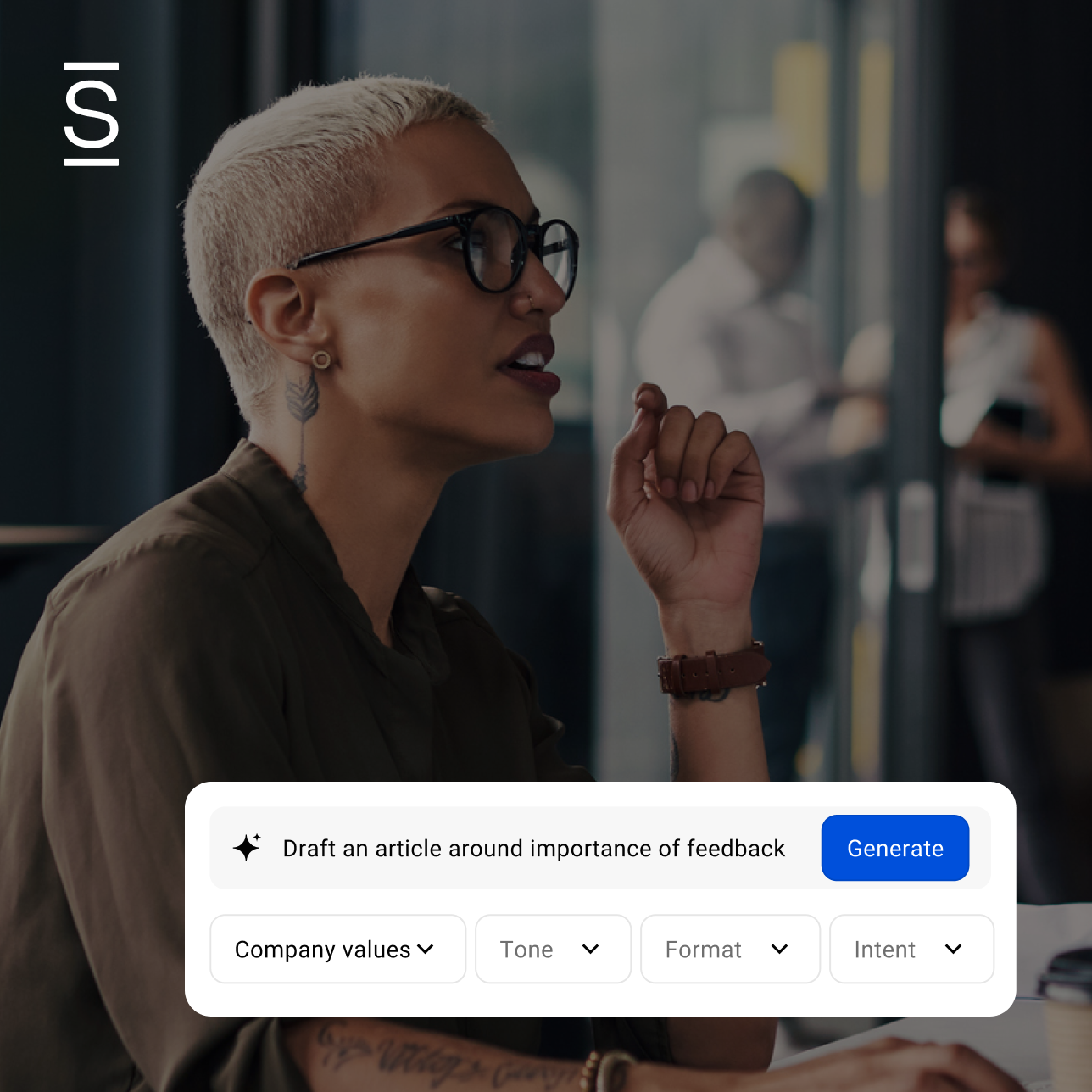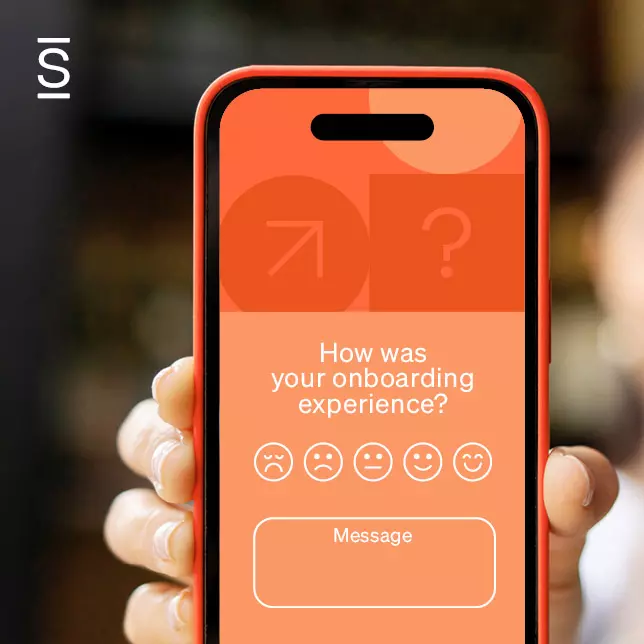You only get one chance to make a first impression — especially in the workplace. When you onboard new employees, the initial welcome experience sets the tone and has a significant impact on probability of retention over the longer haul.
A strong onboarding experience is the foundation for strong and lasting working relationships between a new hire and the organization, their manager, and their coworkers. And studies show a positive onboarding experience can drive:
- 18x more commitment
- 33% higher employee engagement
- 38% increased effectiveness on the job
Time to productivity is reduced and probability of retention increases by more than 80%.
Unfortunately, a recent Gallup study found that only 12% of employees strongly agree their organization does a great job of onboarding new employees. Our new way of working in this post-COVID digital age has compounded onboarding challenges. The number of remote employees has skyrocketed. New-hires are inundated with information, leading to a feeling of overload. And a one-size-fits-all onboarding approach no longer works.
By some estimates, more than one-third of new employees quit within their first year of employment — with over 40% leaving within the first 90 days. A poor employee onboarding experience is a significant factor in this exodus. When people struggle to feel connected to their coworkers, unable to navigate (even the basics) of the organization they’ve recently joined, their engagement can wane from day one.
So let’s look at how to build a better employee onboarding process with some best practices and tools to help you welcome and retain new hires.
7 steps to onboard new employees
- 1 steps to onboard new employees
- 2 Create a personalized orientation program to onboard new employees
- 3 Provide easy access to information and tools
- 4 Set clear expectations with an employee handbook
- 5 Establish a sense of belonging and create meaningful connections
- 6 Highlight how to keep growing and learning
- 7 Ask for feedback and check-in on progress
- 8 Provide ongoing personalized communication
- 9 How Simpplr can help
Related: A comprehensive guide to boosting employee productivity
1. Create a personalized orientation program to onboard new employees
If your organization doesn’t have an existing employee orientation program (like an estimated 24% of organizations), start your onboarding efforts here. Develop a program that includes:
- Welcome and introduction to company, culture, values and mission
- Review of company policies, compensation structure and benefits
- Overview of health and safety procedures and diversity and inclusion initiatives
- Checklist for completing HR and onboarding tasks
- Organizational chart showing company structure and roles
- List of individual job responsibilities and training on tasks
- Overview of goals and a roadmap for success
- Training on company tools and technology
- Q&A session to fill in any blanks
Tip: Use an AI-powered employee experience platform to personalize each employee’s onboarding experience.
Simpplr’s EX AI automates and recommends personalized content, allowing employees to interact with content in a more meaningful and individualized way. Each employee gets a personalized home dashboard, including built-in onboarding workflows, relevant top-down communication and announcements, must-reads, a social feed and intelligent search.
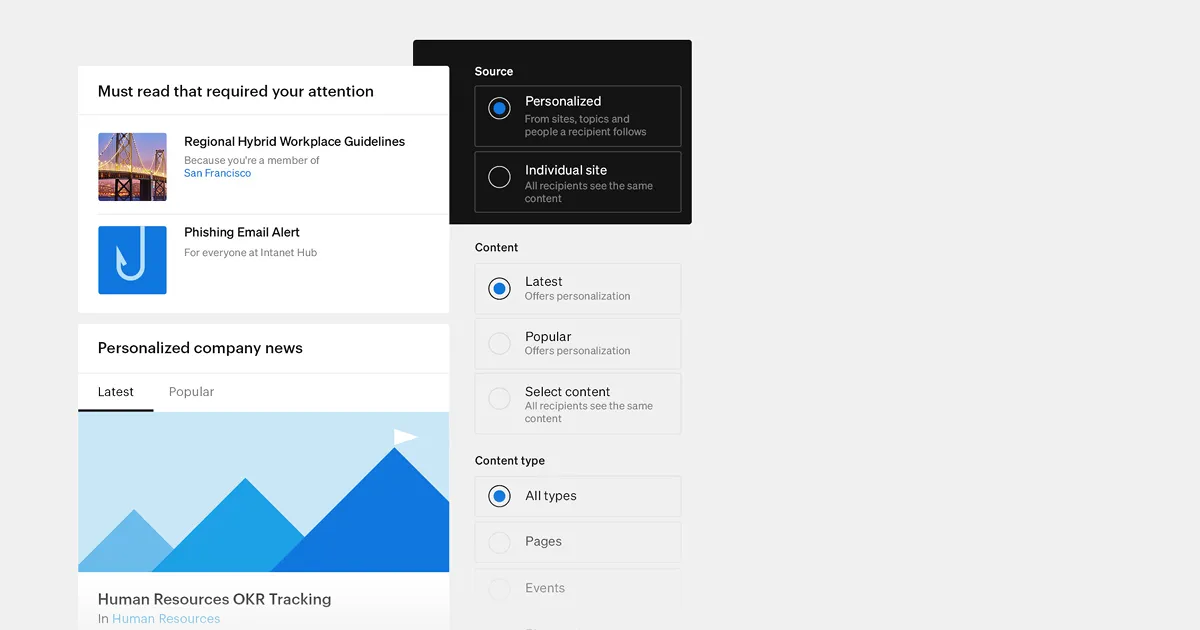
Simpplr’s smart personalization looks at each employee’s role and interests to continuously fine-tune their experience over time.
Related: 5 employee onboarding best practices
2. Provide easy access to information and tools
Employees have a lot of material to absorb when starting a new job. To make it easy for new hires to access and understand information throughout their onboarding journey, create one centralized space for onboarding materials.
Tip: Use a modern EX platform to build an onboarding hub that is engaging and personalized.
- Display and/or link to resources and tools employees need to be set up for success. This could include an overview of the company with a walk-through of organizational structure and strategy, key forms and checklists that make the onboarding process easier, and quick links to the employee directory, IT support desk, benefits site and more.
- Make it easy and engaging with content in varying formats. Welcome employees with videos, copy-based guides and visual graphics such as workflow and organizational charts.
- Guide employees through their paperwork. Help employees complete all of their required paperwork by setting up an onboarding workflow and dashboard to confirm all documentation is completed, automating the process as much as possible.
- Store information for future use. Create a personalized digital workspace where employees can easily go back to reference any material they may need to review again.
By using a unified solution that removes friction from the onboarding process, employees are poised for success from day one.
Related: How a modern intranet can solve 3 top HR challenges
3. Set clear expectations with an employee handbook
A dynamic employee handbook — ideally digitized, so you can easily keep it up-to-date — sets clear expectations from the start. It plays a pivotal role in the larger process of explaining the employee experience at your organization and all the total rewards, programs and perks available to employees.
To give new hires insight into your organization’s unique culture and help them understand HR policies and procedures, create a handbook that explains:
- Your organization’s mission, vision and values
- Employment relationship
- Code of conduct
- Anti-discrimination and harassment
- Work hours and attendance
- Leave policies
- Performance expectations
- Benefits and perks
- Wages and performance
- Safety and security
- Compliance and legal information
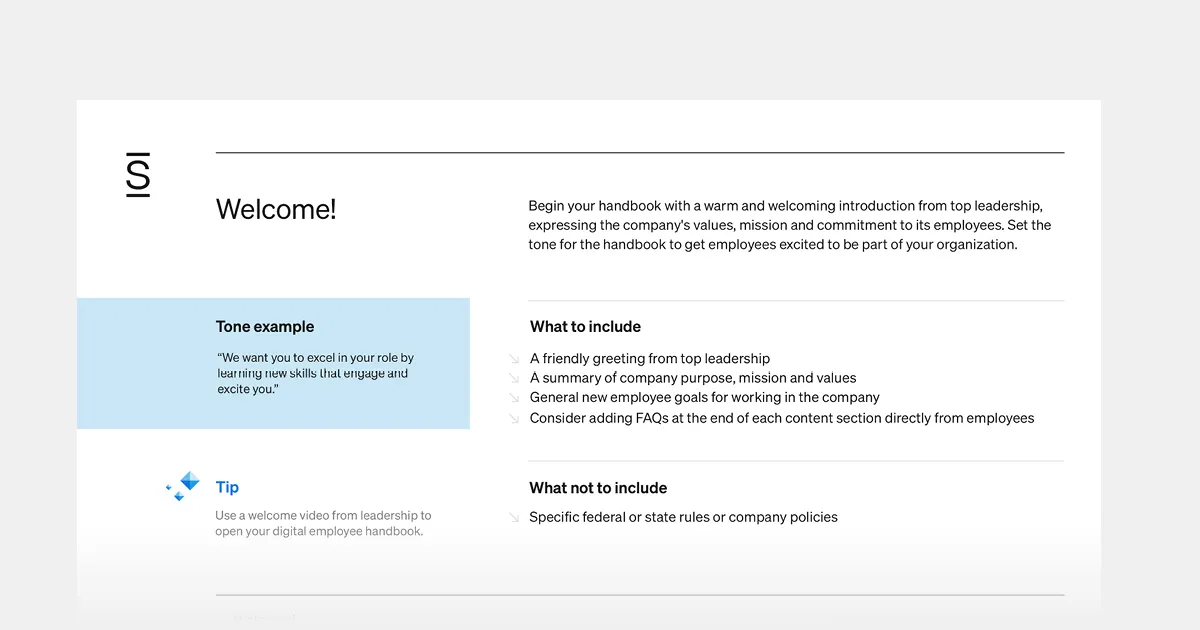
With a digital version of your employee handbook on your intranet, you can create an engaging multimedia experience while sharing important information in one centralized location.
Related: How to create an employee handbook + free employee handbook template
4. Establish a sense of belonging and create meaningful connections
When you onboard new employees, it’s about more than training someone to do a job. It’s about welcoming them to a new community. A sense of belonging can contribute to higher employee engagement, satisfaction, productivity and retention.
Research shows that when employees feel like they belong, it can lead to:
- 56% improved job performance
- 50% lower turnover risk
- 75% fewer employee sick days
Help new team members feel like they belong during your employee onboarding process by:
- Using hiring classes that build connection and an immediate sense of community through a shared experience
- Assigning an onboarding buddy to new hires
- Building profiles for and highlighting new employees on your company intranet
- Introducing new employees to community resources such as employee event calendars and interest groups
Tip: The right EX platform can foster a sense of belonging and help employees create meaningful connections, no matter where they work.
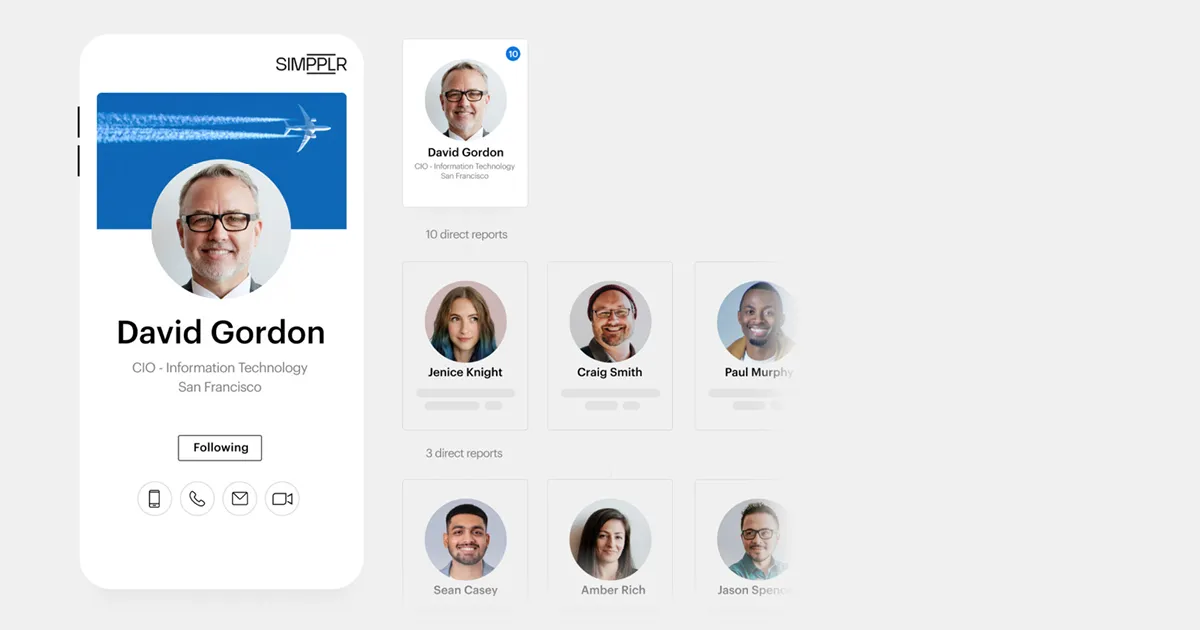
With features such as native video, an intuitive text editor, multi-channel communication and a built-in employee network, an industry-leading EX platform like Simpplr can enhance new employees’ sense of belonging and deepen connections.
Related: The importance of employee connection starts with onboarding
5. Highlight how to keep growing and learning
From day one, you can expect a new employee to wonder about their daily routine and next steps. Employees believe professional development is the No. 1 way to improve company culture, according to the 2022 LinkedIn Global Talent Trends Report. And Gallup found that organizations that have made a strategic investment in employee development report 11% greater profitability and are twice as likely to retain their employees.
Growth opportunities can be the difference maker when it comes to retention.
Use the onboarding experience as an opportunity to highlight growth opportunities within your organization.
- Include onboarding site content that shows potential paths for career progression.
- Use the personalization and targeting capabilities of the right EX platform to share relevant learning and development opportunities throughout an employee’s time with the organization.
- Showcase career stories to inspire and help connect new hires to colleagues in roles that interest them.
6. Ask for feedback and check-in on progress
Don’t think of onboarding as a process for only the first few days an employee is on your team. It takes time for a new employee to settle in and learn the ins and outs of their role, their team, and the organization.
After the initial employee onboarding process, implement regular check-ins to hear how it’s going, provide opportunities for feedback, and address any concerns.
Tip: Leverage an AI-powered EX platform to streamline active and passive employee listening.
Simpplr Survey capabilities capture detailed employee feedback and analyze the results with built-in pulse, engagement and ad hoc surveys. Employee Listening combines Survey insights with passive listening that continuously gathers millions of data points across the platform to detect emotions, sentiment and platform usage patterns.
These insights are then surfaced into dashboards so you can proactively address potential issues, opportunities and trends — ultimately leading to improved engagement, retention and productivity.
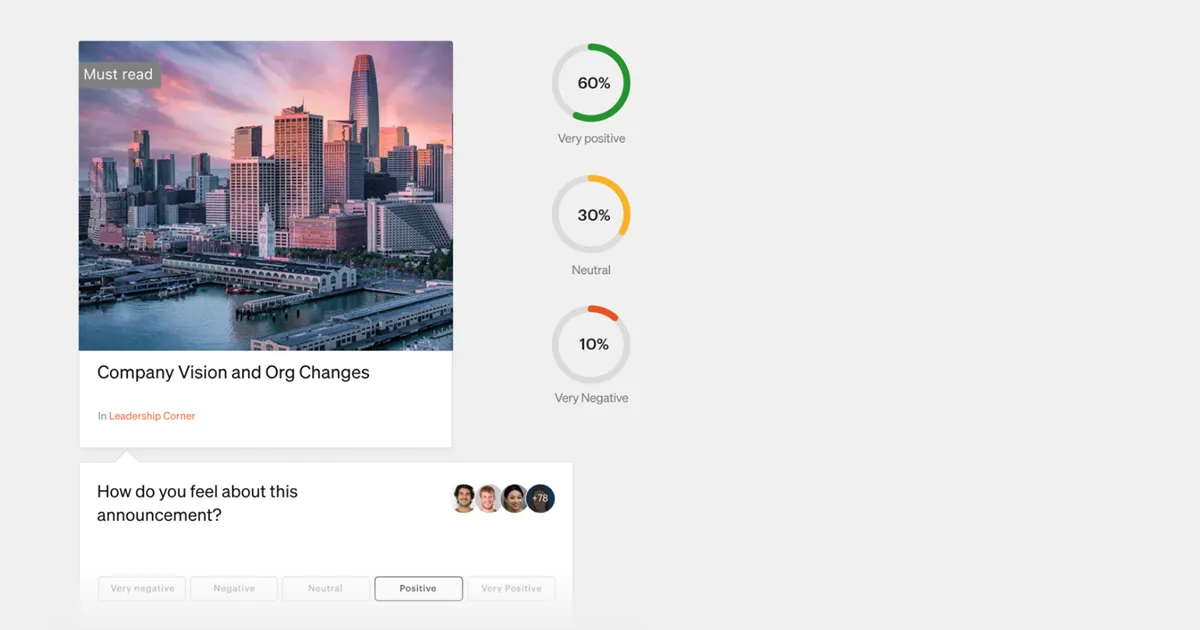
Simpplr Surveys combine built-in pulse, engagement,and ad hoc surveys with AI-powered listening to detect underlying sentiments and emotions — helping identify pain points and areas of improvement for better decision-making.
Listen to what employees are saying. Then, make adjustments based on what you learn. The point of collecting feedback is to be able to see what employees want and need and then take action to positively impact employee experience and engagement.
Related: How an AI-powered EX platform can revolutionize the employee experience
7. Provide ongoing personalized communication
Another way to keep employees engaged long after their onboarding experience is by providing ongoing personalized communication that continues to offer support. Leverage multiple internal communications channels to reach employees where they are.
- Use a company newsletter to share updates and personalized messaging based on an employee’s role, status and preferences.
- Send personalized messages based on employees’ activity, location and interests.
- Set up real-time chat so even remote employees have direct lines of communication with leaders and teams.
- Leverage AI assistance so employees can quickly receive accurate responses to their questions and requests.
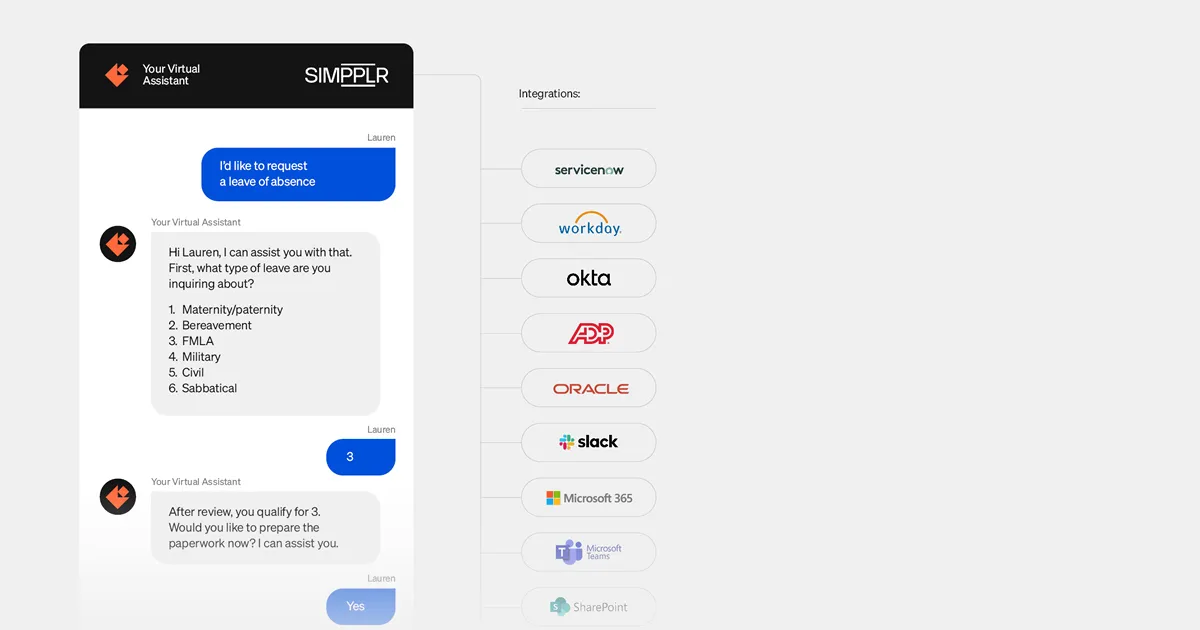
Simpplr’s AI Assistant can deliver a personalized employee experience by providing customized and relevant responses that meet specific needs, taking into account the employee’s location, department and other relevant attributes.
Clear, personalized communication is essential as you onboard new employees — and work to keep them engaged throughout the entire employee lifecycle.
How Simpplr can help
Start laying the foundation for a positive employee experience on day one with an onboarding process that welcomes new hires, sets them up for success, and makes them feel empowered and excited about their new role.
Request a demo today to see how the new hire onboarding features in Simpplr’s modern EX platform make it easy to set up orientation programs that engage and excite employees from the start.










